Tonga is a remote island nation located in the South Pacific Ocean. With its diverse landscape of pristine beaches, tropical rainforests, and rugged mountains, Tonga is a paradise for birdwatchers.
Home to over 70 species of birds, this archipelago is a hotspot for rare and endangered species. From the majestic white-tailed tropicbird to the vibrant red-tailed tropicbird, the variety of birds that can be found in Tonga is truly remarkable.
In this article, we will explore some of the amazing birds of Tonga and the importance of conserving their habitats.
1. Tongan Megapode
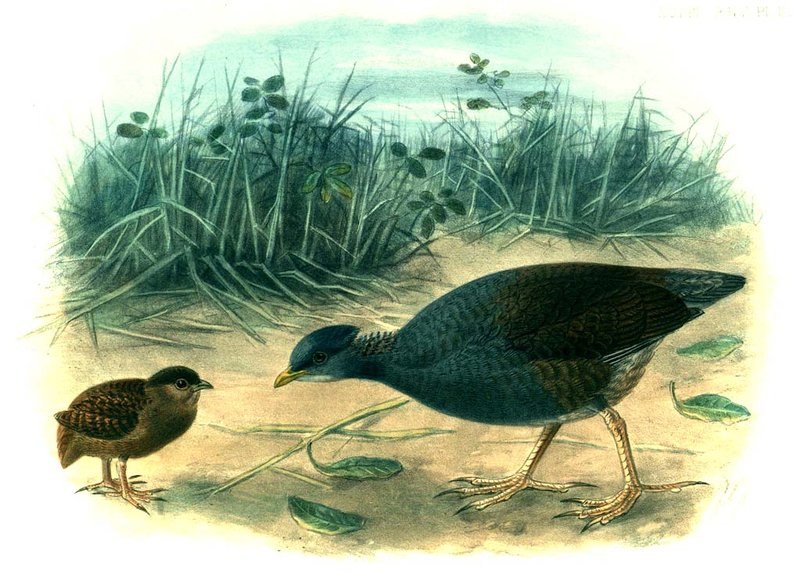
The Tongan Megapode is a species of bird found only in the island nation of Tonga. This rare megapode family member has been dubbed the Polynesian Megapode and the Niuafo’ou Megapode, after its primary habitat on Niuafo’ou Island.
It was named by British Consul William Thomas Pritchard to honor him for his work with this unique bird’s population conservation efforts.
The Tongan Megapode stands out among its kind due to its lack of flight capabilities; instead, it relies heavily on walking as locomotion while searching for food such as insects and fruits.
As one of few remaining members in the megapod family, it plays an important role in preserving biodiversity across many islands within Oceania region today.Scientific classification:
| Kingdom | Animalia |
| Phylum | Chordata |
| Class | Aves |
| Order | Galliformes |
| Family | Megapodiidae |
| Genus | Megapodius |
| Species | M. pritchardii |
2. Polynesian Starling
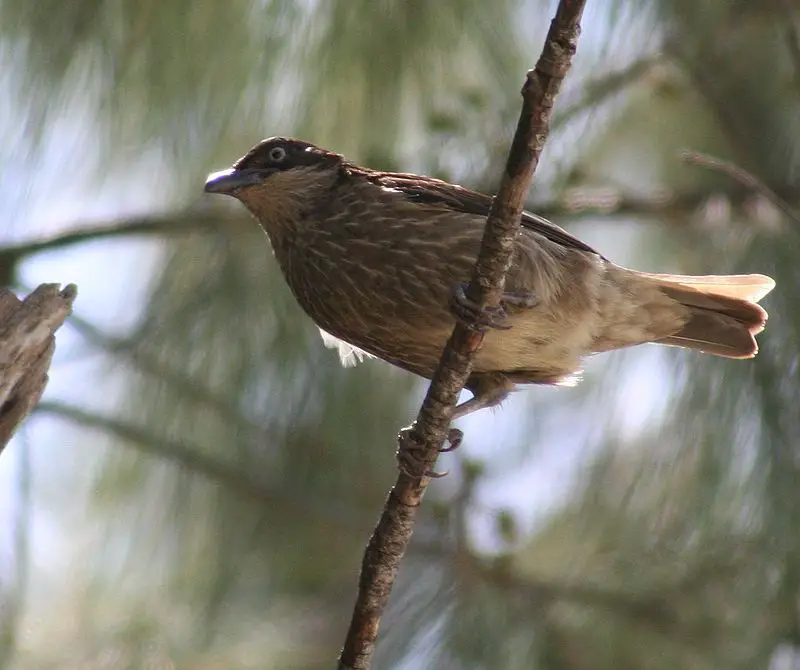
The Polynesian starling is a species of bird from the family Sturnidae. It is found in several places in Oceania, such as Samoa, Fiji, Niue and Tonga. Its habitats are subtropical or tropical dry forests and moist forests.
It varies in appearance depending on its location with some subspecies being darker colored than others.
This starling has a distinct call which can be described as raspy yet melodic at times.
Despite its wide range across the Pacific Islands it continues to face threats from human activities such as deforestation and agricultural conversion of land into plantations for crops like sugarcane that reduce their natural habitat .
Conservationists have called for increased protection efforts to ensure this beautiful species survives into future generations.Scientific classification:
| Kingdom | Animalia |
| Phylum | Chordata |
| Class | Aves |
| Order | Passeriformes |
| Family | Sturnidae |
| Genus | Aplonis |
| Species | A. tabuensis |
3. Many-Colored Fruit Dove
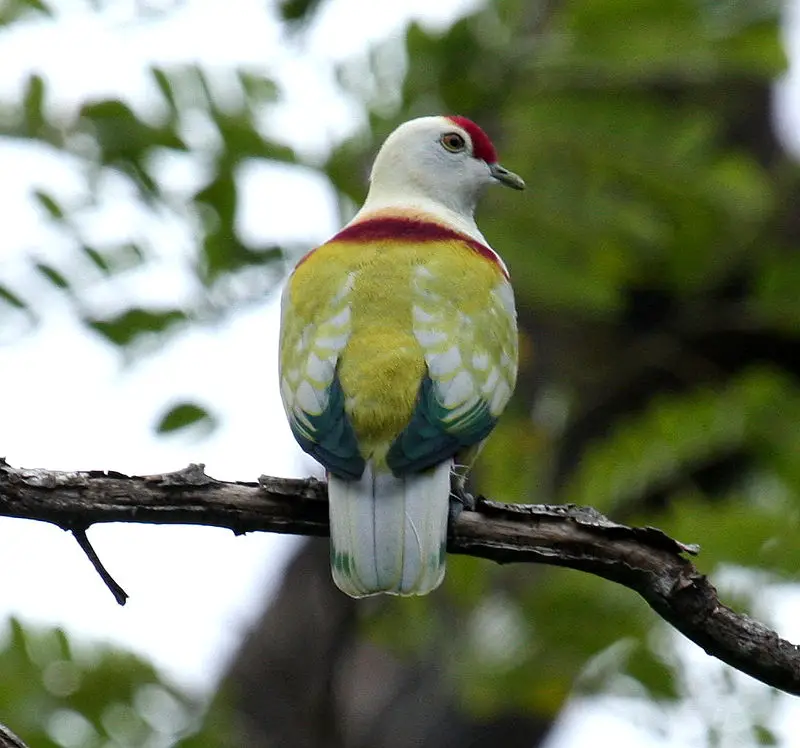
The many-colored fruit dove, also known as the manuma in Samoan language, is a species of bird belonging to the family Columbidae.
It inhabits subtropical or tropical moist lowland forests on islands in Fiji, Samoa and Tonga.
The birds are usually spotted foraging for food among trees during the day but nest at night.
They feed mainly on fruits from various tree species with some insects supplementing their diet occasionally.
These beautiful doves have brightly coloured feathers ranging from white to yellowish green depending upon its age and gender; they make attractive pets when tamed correctly.
With proper conservation efforts we can ensure these stunning creatures remain part of our environment for years to come.Scientific classification:
| Kingdom | Animalia |
| Phylum | Chordata |
| Class | Aves |
| Order | Columbiformes |
| Family | Columbidae |
| Genus | Ptilinopus |
| Species | P. perousii |
4. Tongan Whistler
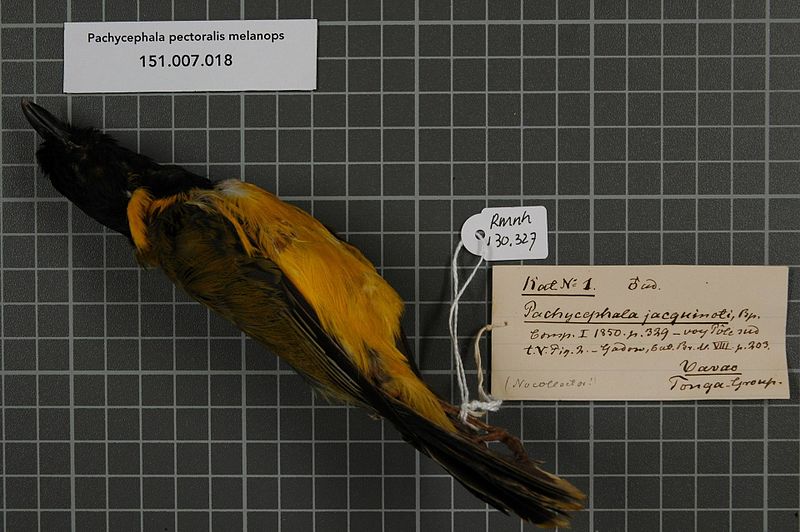
The Tongan whistler is a species of bird native to the islands of Vava’u and Late in Tonga. It has black head and throat, with yellow breast feathers on its underside.
The male also has brownish-green upperparts that distinguish it from the Australian golden whistler which looks similar.
Found mainly in tropical primary forest, these birds can occasionally be spotted in second growth or wooded plantations too.
They are territorial birds so they will often stay close by their nesting area throughout most of the year except during migration season when they move around more freely looking for food sources such as insects, fruits and nectar from flowers.Scientific classification:
| Kingdom | Animalia |
| Phylum | Chordata |
| Class | Aves |
| Order | Passeriformes |
| Family | Pachycephalidae |
| Genus | Pachycephala |
| Species | P. jacquinoti |
5. Blue-Crowned Lorikeet
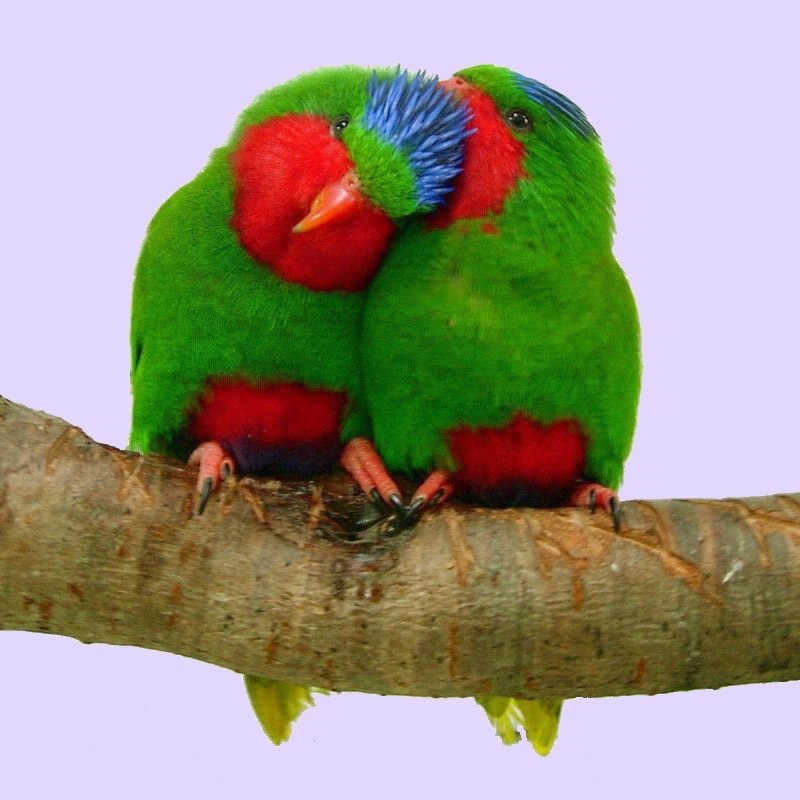
The blue-crowned lorikeet is a stunningly colorful bird native to the South Pacific region. It has bright green wings and an emerald back, with beautiful yellow accents on its neck, chest and belly.
Its most distinctive feature is its brilliant royal blue crown of feathers that extends from its head down onto the top of its beak.
This species can be found in Fiji, Tonga, Samoa, Niue and surrounding islands such as ʻAlofi , Fotuhaʻa etc.
The diet for this parrot consists mainly of nectar from flowers or fruits such as mangoes or bananas – making it one of the few birds which are able to feed directly off plants.
Blue crowned lorikeets are also known for their playful nature; they often flock together in groups while playing games among themselves like chasing each other around branches or flying up high into trees before swooping back down again.Scientific classification:
| Kingdom | Animalia |
| Phylum | Chordata |
| Class | Aves |
| Order | Psittaciformes |
| Family | Psittaculidae |
| Genus | Vini |
| Species | V. australis |
6. Fiji Shrikebill
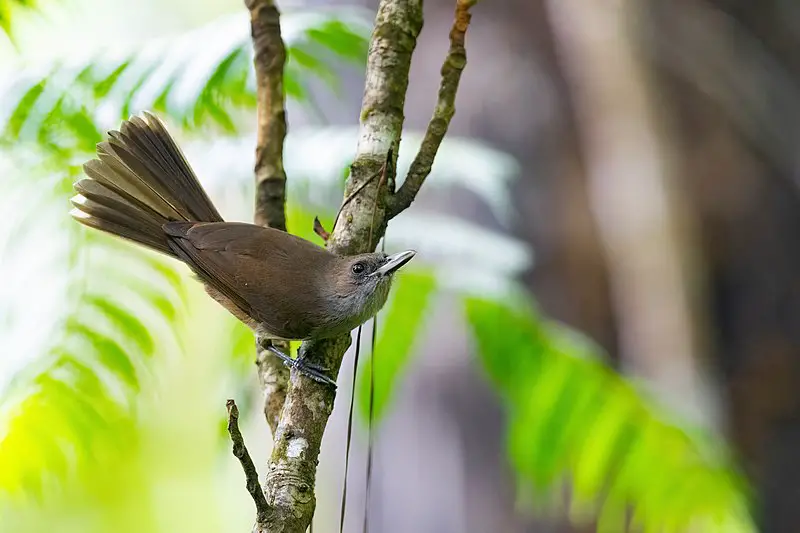
The Fiji Shrikebill is a songbird found in American Samoa, Fiji and Tonga. It inhabits subtropical or tropical moist lowland forests and was originally classified as belonging to the genus Myiolestes.
Twelve subspecies of this bird have been discovered, which are distinguishable by their size and plumage colouration.
The common name for this species comes from its distinctive bill shape -it resembles that of a shrike- along with an alternate moniker; the uniform shrikebill.
This small but beautiful creature has mainly grey feathers on its body while darker shades adorn its wings and tail tip; males also boast faint chestnut markings around their eyes making them easily recognisable amongst other birds in the area.Scientific classification:
| Kingdom | Animalia |
| Phylum | Chordata |
| Class | Aves |
| Order | Passeriformes |
| Family | Monarchidae |
| Genus | Clytorhynchus |
| Species | C. vitiensis |
7. Pacific Imperial Pigeon
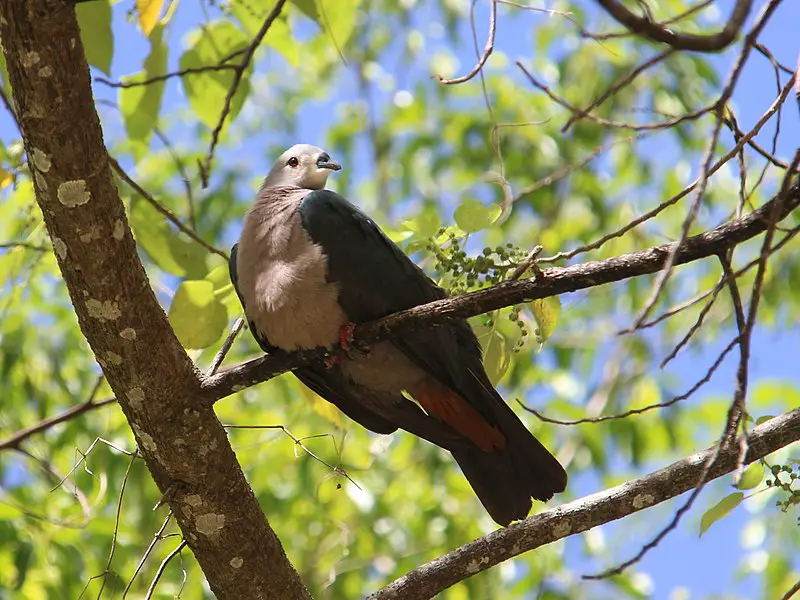
The Pacific imperial pigeon is a beautiful species of bird found in many islands located throughout the South Pacific. It has an iridescent green body, white neck and head with black markings around its eyes and beak.
Its wings are reddish-brown with a large area of blue on each side near the tips. This majestic creature was formally described by Johann Friedrich Gmelin in 1788 and it can grow up to 11 inches long with a wingspan reaching 33 inches wide.
The diet of this amazing avian consists mainly of fruits like figs, mangos, breadfruit, guavas as well as seeds which they search for while flying low over forests or woodlands.
As one can imagine these birds have become very important culturally to many people living within their range due to their beauty and stunning colors.Scientific classification:
| Kingdom | Animalia |
| Phylum | Chordata |
| Class | Aves |
| Order | Columbiformes |
| Family | Columbidae |
| Genus | Ducula |
| Species | D. pacifica |